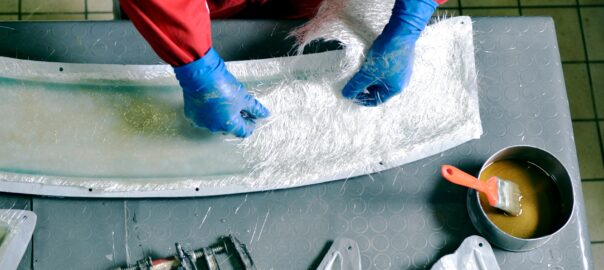Resin Transfer Molding (RTM) is a highly versatile manufacturing process used to create custom fiberglass parts with intricate designs and superior mechanical properties. However, the quality and performance of the final products heavily depend on the precise control of several process parameters during RTM. This article explores the optimization of these parameters—such as injection pressure, resin viscosity, mold temperature, and fiber placement—to achieve the best possible outcomes in custom fiberglass manufacturing.
Importance of Process Parameter Optimization
The RTM process involves injecting resin into a mold cavity where a pre-formed fiber reinforcement is placed. The interaction between the resin and the fibers, along with the conditions under which the resin is injected and cured, significantly influences the strength, durability, and dimensional accuracy of the final composite part. By optimizing these parameters, manufacturers can minimize defects, improve material properties, and enhance production efficiency.
Injection Pressure and Flow Rate
Injection pressure and flow rate are critical factors in the RTM process. If the pressure is too low, the resin may not fully impregnate the fiber preform, leading to voids and dry spots within the composite. Conversely, excessive pressure can cause fiber washout, where the fibers are displaced from their intended positions, compromising the part’s structural integrity.
Recent studies suggest that the optimal injection pressure must be carefully balanced to ensure complete impregnation without disturbing the fiber architecture. Computational fluid dynamics (CFD) simulations have become invaluable tools for predicting resin flow behavior and identifying the optimal pressure settings. These simulations can model different scenarios, allowing manufacturers to fine-tune their processes before actual production, reducing the need for costly trials.
Resin Viscosity and Temperature Control
Resin viscosity plays a crucial role in the RTM process. A resin that is too viscous may struggle to flow through the mold, leading to incomplete wet-out of the fibers. On the other hand, a resin with too low viscosity may flow too quickly, failing to properly fill the mold before curing begins.
Temperature control is key to managing resin viscosity. By maintaining the mold at an appropriate temperature, manufacturers can ensure that the resin remains at an optimal viscosity throughout the injection process. This not only facilitates better flow and impregnation but also contributes to more consistent curing and improved mechanical properties in the finished part.
Advanced temperature control systems now allow for real-time adjustments based on sensor feedback, ensuring that the resin stays within the desired viscosity range during the entire process. These systems have been shown to significantly improve the quality and repeatability of RTM-produced fiberglass parts.
Mold Design and Fiber Placement
The design of the mold and the placement of fibers within it are also critical to the success of the RTM process. Molds must be designed to allow for even resin distribution and efficient venting of air and excess resin. Poor mold design can result in uneven resin flow, leading to defects such as voids, delamination, or incomplete curing.
Fiber placement within the mold must be carefully controlled to ensure that the fibers provide maximum reinforcement where it is needed most. In custom fiberglass parts, this often involves using tailored fiber orientations, such as unidirectional, biaxial, or triaxial weaves, to optimize strength in specific directions. Automation technologies, such as robotic fiber placement, are increasingly being used to ensure precision and consistency in fiber orientation, leading to better performance and reduced waste.
Curing Time and Cycle Optimization
Curing is the final step in the RTM process, where the resin hardens to form the solid composite. The curing time and cycle parameters, including temperature ramps and hold times, must be optimized to achieve full polymerization of the resin without introducing thermal stresses that could lead to warping or cracking.
Research indicates that a gradual ramp-up of temperature, followed by controlled cooling, can help in achieving a uniform cure. This approach reduces the risk of internal stresses, thereby improving the dimensional stability and mechanical properties of the composite part. Process monitoring tools, such as thermocouples and infrared sensors, are often employed to track the temperature within the mold, providing real-time data that can be used to adjust the curing cycle as needed.
Conclusion
Optimizing the process parameters in resin transfer molding is essential for producing high-quality custom fiberglass parts. By carefully controlling factors such as injection pressure, resin viscosity, mold temperature, and fiber placement, manufacturers can enhance the strength, durability, and overall performance of their composites. With the aid of advanced simulation tools, temperature control systems, and automation technologies, the RTM process can be fine-tuned to deliver consistent, reliable results that meet the stringent requirements of modern industrial applications.


